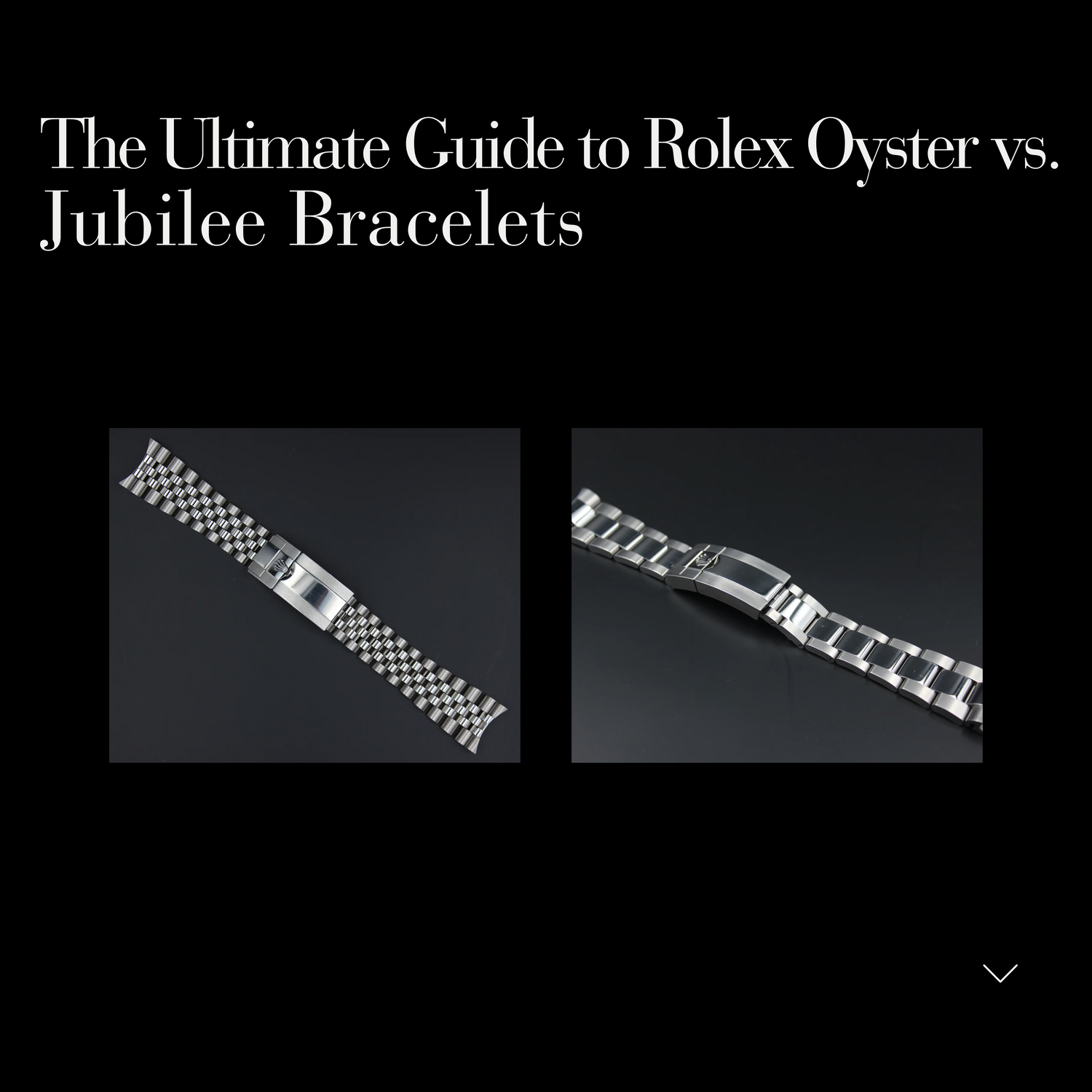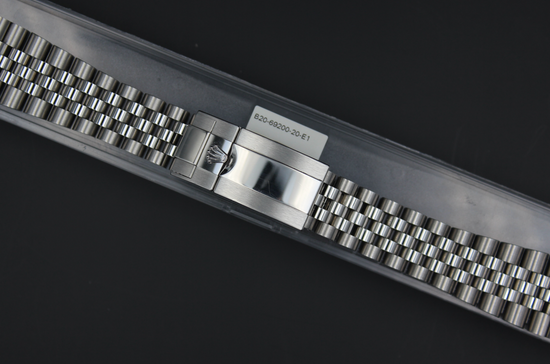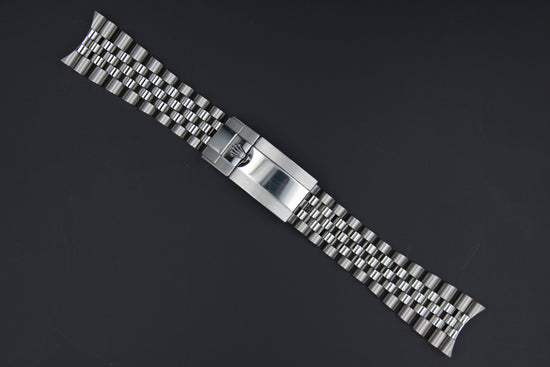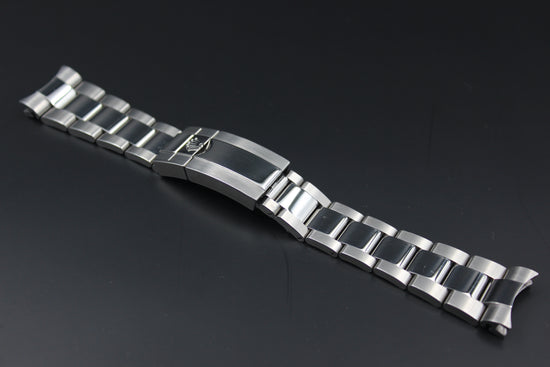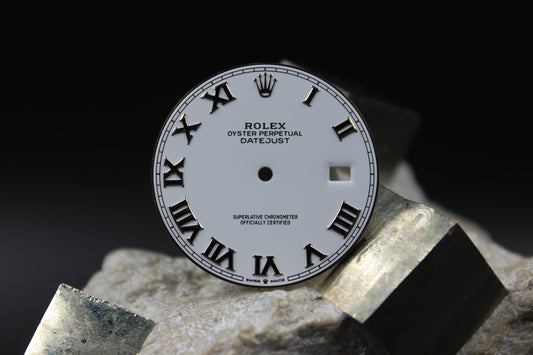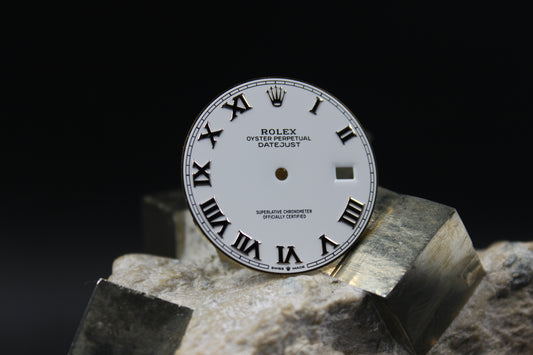The Ultimate Guide to Rolex Oyster vs. Jubilee Bracelets
Introduction
Rolex watches are known for their timeless elegance and precision. Two of the most popular bracelet styles offered by Rolex are the Oyster and Jubilee bracelets. This guide will explore the differences between these two options and help you decide which one might be right for you.
Key Takeaways: Oyster vs Jubilee Bracelet
- Oyster: Durable, versatile, and sporty
- Jubilee: Elegant, comfortable, and dressy
- Both offer excellent quality and craftsmanship
- Choice depends on personal style and intended use
- Slight price difference, with Jubilee often commanding a premium
- Both feature Rolex's Easylink extension system for comfort
The Iconic Oyster Bracelet
The Rolex Oyster bracelet has been around for over 70 years. It was first patented in 1947 and introduced to the public in 1948. This bracelet is known for being tough and versatile. It has a wide, flat three-piece link design that has changed from riveted links to the solid links we see today.
Rolex bracelets are an important part of the watch's design, and the Oyster bracelet is no exception. It comes in different sizes to fit various Rolex models, from the smaller Lady-Datejust to the larger Deepsea. Over the years, the Oyster bracelet has been improved with better clasp mechanisms and link construction to make it more durable and comfortable.
The Oyster bracelet is often seen as more durable and better at hiding wear and tear. Its brushed finish helps hide scratches, making it a good choice for everyday wear or more adventurous activities. The strong construction of the Oyster bracelet also helps with water resistance, making it popular for Rolex's professional series watches like the Submariner and Sea-Dweller.
The Elegant Jubilee Bracelet
The Rolex Jubilee bracelet was created in 1945 to celebrate Rolex's 40th birthday. It has a special five-piece link design that looks more fancy and dressy. The Jubilee bracelet was first launched with the Datejust model and has since become popular for various Rolex collections, including some sports models like the GMT-Master II.
The Jubilee bracelet is often seen as the dressier option, especially when paired with a fluted bezel. Its detailed design and shinier surfaces give it a luxurious feel, making it a popular choice for formal events. The smaller links of the Jubilee bracelet also allow for more flexibility, which many people find more comfortable, especially in hot weather.
Durability and Wear Resistance
When it comes to toughness, the Oyster bracelet usually wins. Its wider links and simpler design make it more resistant to wear and tear. The Jubilee bracelet, while still strong, might be slightly less durable because of its more complex construction with smaller, more numerous links. However, both bracelets are made to Rolex's high standards and are built to last.
The Oyster bracelet's brushed finish is particularly good at hiding scratches, especially on sports models like the Submariner. However, some Oyster bracelets with shiny center links can show scratches more easily. The Jubilee bracelet's shiny surfaces may show scratches more readily, but the complexity of its links can help distract from minor wear. Regular care and careful handling can help keep both bracelet types looking good over time.
Comfort and Wearability
Both the Oyster and Jubilee bracelets are designed to be comfortable, but some people find the Jubilee to be slightly more comfortable because it's more flexible. The smaller links of the Jubilee bracelet allow it to fit more closely to the wrist, which can be nice in hot weather. This flexibility can also make the Jubilee feel lighter on the wrist, even though it's often slightly heavier than the Oyster.
The Oyster bracelet, with its larger links, may feel more substantial on the wrist. This can be good for those who like their watch to feel a bit heavier. Both bracelets have Rolex's Easylink rapid extension system, which allows for a 5 mm adjustment in bracelet length for continued comfort throughout the day. This cool feature lets wearers fine-tune the fit of their bracelet without needing tools, accommodating slight changes in wrist size due to temperature or activity.
Aesthetic Appeal and Versatility
The Oyster bracelet is often seen as the more versatile option, able to go from casual to formal settings easily. Its clean, simple design works well with a wide range of watch styles and can be dressed up or down easily. The Oyster bracelet's straightforward look makes it popular for both men's and women's watches, and it goes well with everything from the sporty Submariner to the elegant Day-Date.
The Jubilee bracelet, with its more detailed design, tends to look dressier. It pairs particularly well with Rolex Datejust models and can add a touch of elegance to any watch it's on. The Jubilee's complex pattern of links catches the light in a unique way, creating a sparkling effect that many people like. While traditionally associated with dressier models, the Jubilee has become popular on sports watches in recent years, offering a fresh take on classic designs.
Price Considerations
In terms of retail pricing, there's usually a small difference between Oyster and Jubilee bracelet options on the same watch model. For example, in 2023, the Rolex GMT-Master II 126710BLRO with an Oyster bracelet costs $10,700, while the Jubilee bracelet version costs $10,900, a $200 difference. This price difference reflects the slightly more complex construction of the Jubilee bracelet.
However, in the second-hand market, the price gap can be bigger. Some collectors are willing to pay more for the Jubilee bracelet, particularly on sports models where it's less common. This can sometimes result in a price difference of up to $2,000 in favor of the Jubilee bracelet. The rarity of certain bracelet and watch combinations can also affect pricing in the pre-owned market.
Choosing Between Oyster and Jubilee
In the end, choosing between an Oyster and Jubilee bracelet comes down to what you like and how you plan to use the watch. Here are some things to think about:
Key Factors: Oyster vs Jubilee Bracelet
- Intended use: Daily wear or special occasions
- Personal style: Sporty or dressy look
- Versatility: How well it fits different settings
- Comfort and fit: How it feels on your wrist
- Durability: How well it holds up over time
- Budget and resale value: Initial cost and future market value
Think about your lifestyle and how you plan to wear the watch. If you want a versatile daily watch that can handle more active use, the Oyster bracelet might be better. If you prefer a fancier look or prioritize comfort and flexibility, the Jubilee could be the way to go.
The Future of Rolex Bracelets
Rolex keeps coming up with new ideas for bracelet design and technology. In 2015, they introduced the Oysterflex bracelet, which combines a flexible metal blade with a high-performance elastomer. This shows that Rolex is always looking for ways to improve comfort and durability. This hybrid bracelet offers the strength of a metal bracelet with the comfort of a rubber strap, showing Rolex's commitment to meeting changing consumer preferences.
As materials science advances, we might see new alloys or composites used in Rolex bracelets. However, the classic designs of the Oyster and Jubilee bracelets are likely to remain staples in the Rolex collection for years to come. Rolex may continue to refine these iconic designs, potentially using new materials or improving clasp mechanisms for better comfort and security.
Conclusion
Both the Oyster and Jubilee bracelets are iconic Rolex designs with their own unique strengths. The Oyster offers toughness and versatility, while the Jubilee provides elegance and comfort. Your choice will depend on your personal style, the watch model you're pairing it with, and how you plan to wear your Rolex.
Whether you prefer the sporty look of the Oyster or the refined appearance of the Jubilee, both bracelets offer the quality and craftsmanship that Rolex is known for. If you're still not sure which bracelet is right for you, consider visiting an authorized Rolex dealer to try on both options and see which feels best on your wrist. Many Rolex fans even own multiple watches with different bracelet types to suit various occasions and moods.
Remember, the best bracelet is the one that makes you excited to wear your Rolex every day. Both the Oyster and Jubilee have stood the test of time and continue to be loved by watch collectors and enthusiasts worldwide. Whichever you choose, you'll be wearing a piece of watch history on your wrist.
If you have any questions about Rolex bracelets or need help choosing the right one for you, don't hesitate to contact us for expert advice. Our team of specialists can provide personalized recommendations based on your preferences and lifestyle, ensuring you make the best choice for your Rolex watch.

